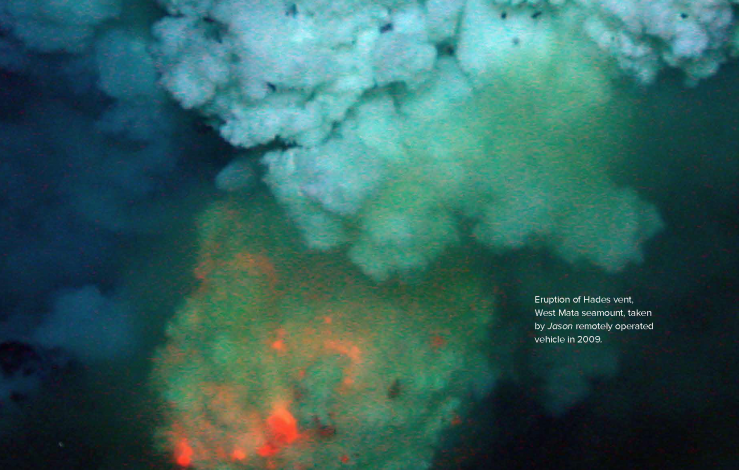A 30-year history of the NOAA Vents program was published in Oceanography. In 1983, a small team of NOAA PMEL scientists, subsequently joined by colleagues at Oregon State University (CIMRS) and the University of Washington (JISAO), exploited new seafloor and water column mapping technologies to understand the impact of hydrothermal systems on ocean chemistry and seafloor ecosystems. The first decade featured fundamental discoveries about physical, biological, chemical, and oceanographic consequences of deep submarine eruptions. Partnering with international researchers, Vents made the first ever time-series studies of active submarine eruptions. Vents research set global standards for an observation-driven understanding of the transfer of heat, chemicals, and organisms from Earth’s hot interior into the ocean.
In 2013, the Vents Program was restructured into two new programs, Earth-Ocean Interactions and Acoustics, continuing the Vents legacy while focusing directly on NOAA strategic goals in ocean processes and ecosystems.



